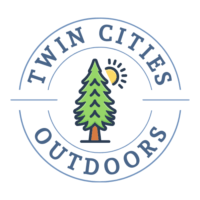
Do you like to know the trees you’re looking at when you’re outside doing your favorite activities? I do, too! Let’s take a look at some of Minnesota’s most common trees we find around the Twin Cities.
I’m no expert, but I’m the type that likes to know: Is this a birch or an aspen? Is this a red pine or a white pine? What’s that towering tree over there?
So I’ve educated myself over the years as I’ve spent time outside.
You can, too!
Coniferous or Deciduous?
In a nutshell, coniferous trees keep their leaves all year (pines, evergreens) and deciduous trees lose their leaves in the fall (everything else).
We have lots of both kinds in Minnesota.
Common conifers are pines and firs. Common deciduous are maples, oaks and birch. We won’t get into the nitty-gritty of various types of firs, maples, oaks, etc. But let’s focus on a few basics:
Birch or Aspen?
We have both birch and aspen in our neighborhood. You probably do, too, as they’re common trees all over Minnesota.
At first glance they look very similar:
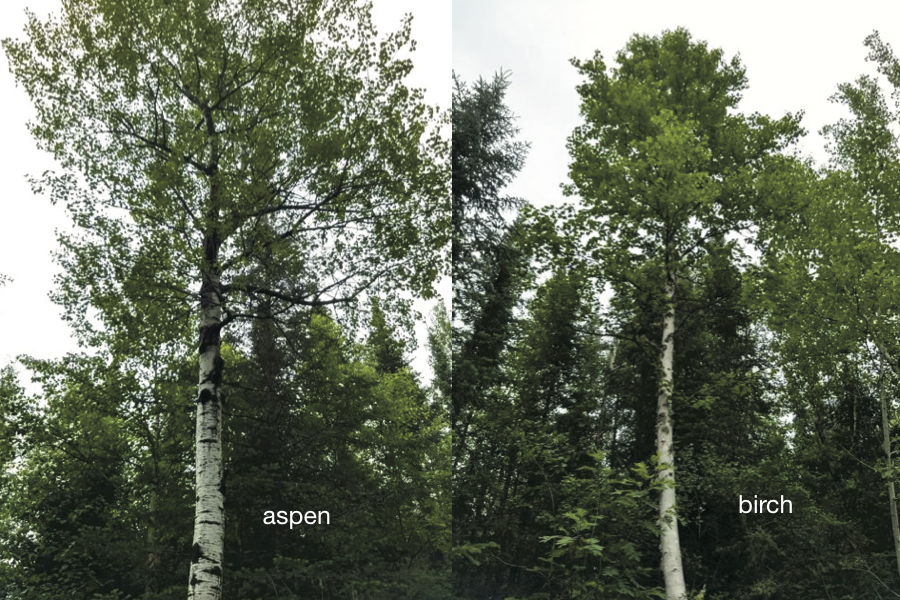
Both have whitish bark. They have similar leaves. They both turn bright yellow or gold in the fall.
The easiest way to tell the difference to to take a close look at the bark:
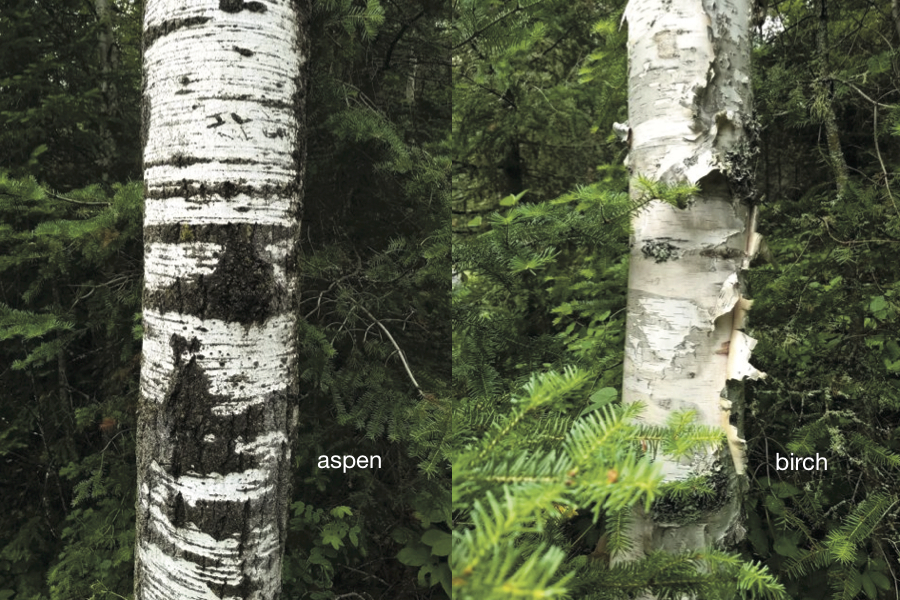
The aspen’s bark looks more “barky” especially down towards the base of the tree. The bark of large aspen looks almost like regular brown tree bark at the base. Birch is white all the way to the ground, and has the tell-tale paper.
What about the Evergreens?
My personal favorite evergreen is the white pine. I fell in love with these majestic pines during my first summer in the Boundary Waters. They’re the ones that tower over everything else in the forest up there. That summer my friend, Danny, told me you can identify them at a distance by their “furry” needles.
It’s true—the long needles of the white pine look furry, especially when compared to the similar-looking red pine. Also notice the red pine’s needles look reddish or brown at their base:
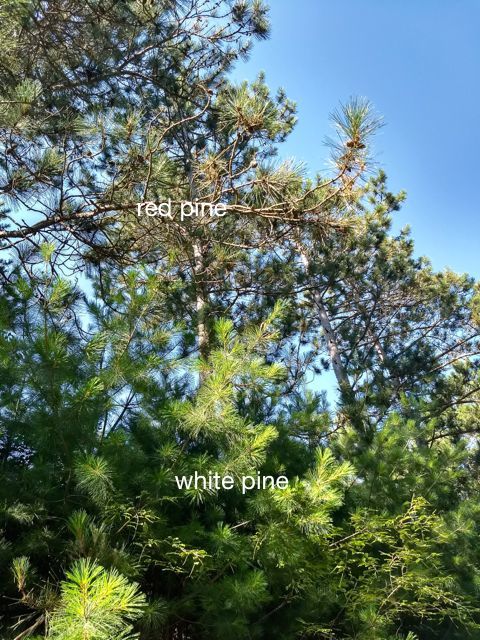
They both look different from the cedar, which has flat leaves:
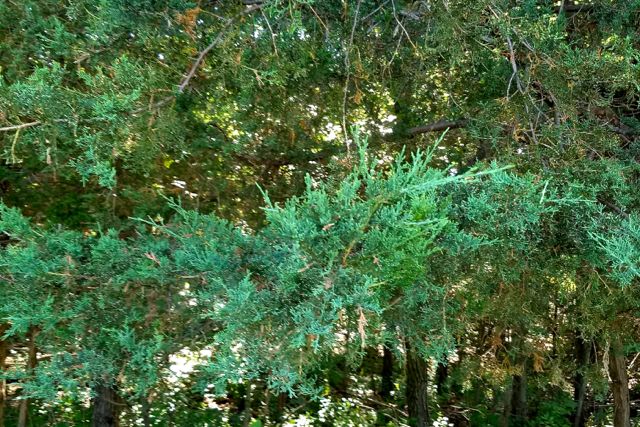
You can also tell the difference by their bark.
The red pine has a distinct reddish tinge and its bark has a layered, flaky look. The white pine’s texture seems more uniform and rough. The cedar looks completely different from both, almost stringy in comparison:
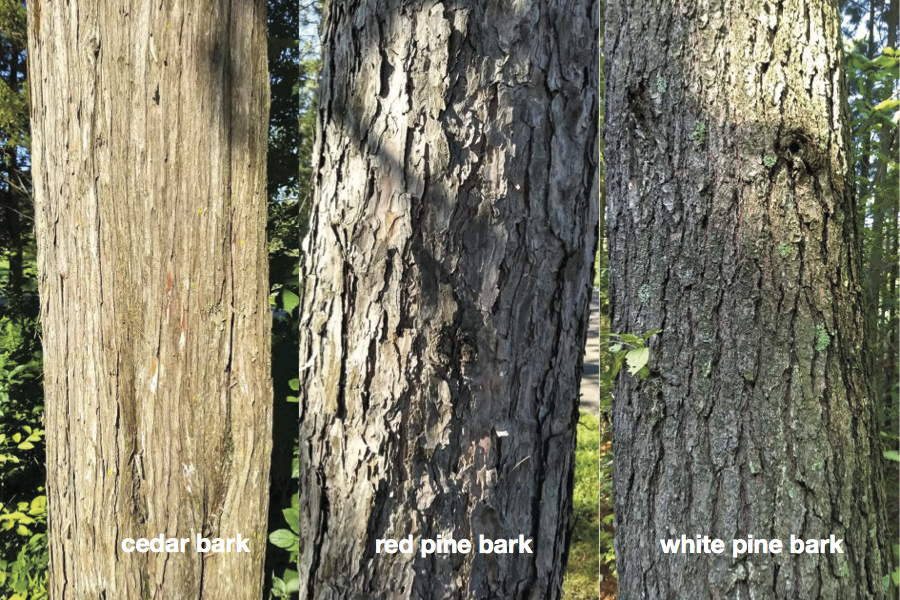
Maples and Oaks
Maples are popular because of their fabulous fall color, and we have plenty of them in the Cities. They’re easily identifiable by their leaves—or if you forget, just remember Canada’s flag 🙂
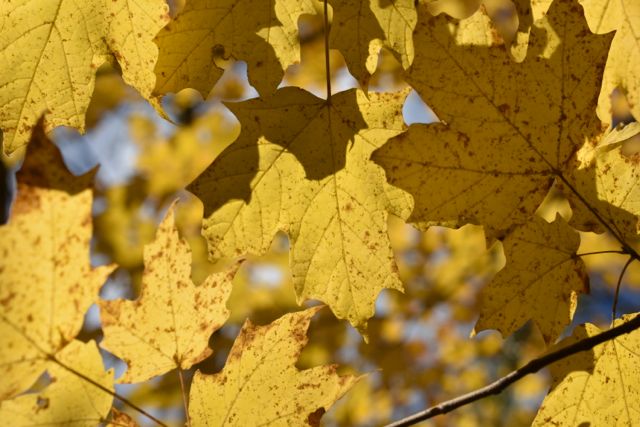
Maples are the ones with the helicopter seeds.
Oaks display more earthy tones in the fall. They’re easy to spot in the winter because many of them keep a good chunk of their leaves until new growth pushes them out in the spring. That’s nice for winter variety, but if you have oaks in your yard you already know you have to rake twice a year!
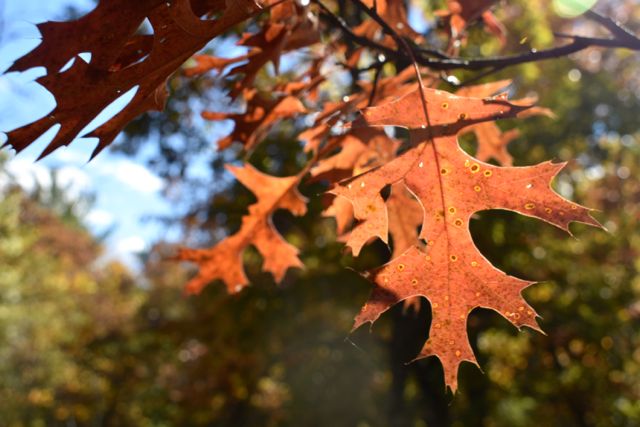
If you have oaks you also have lots of squirrels, because squirrels love acorns, the seeds of the oak.
Fir or Spruce? Or Tamarack…?
Both fir and spruce have the classic A-shape—they look like Christmas trees. They’re both short-needled. The way I tell them apart is: fir branches tend to spread upward at the ends while spruce branches tend to droop, especially the bigger they gets.
And did you know we have an “evergreen” that loses its needles every fall? Those are tamaracks.
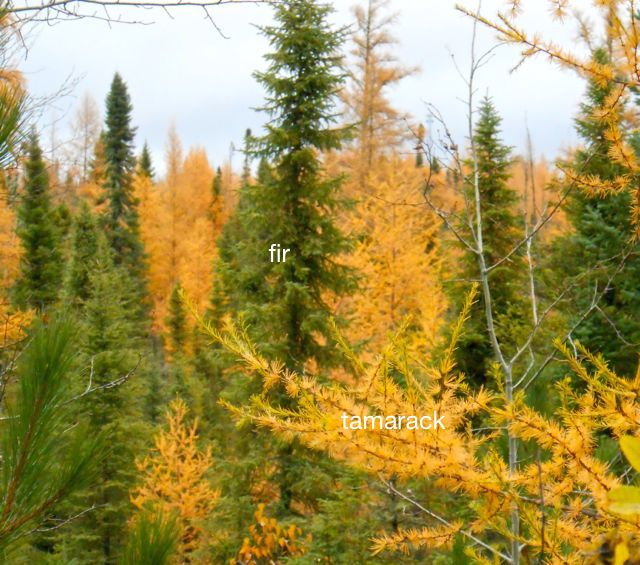
They’re easiest to spot in the fall. They look like balsams, but their needles turn bright gold. They’re great because they turn after most of the other trees have already lost their leaves for the season. An extra dose of color in the late fall.
Tamarack needles and branches have a whispier look than either fir or spruce. With practice you’ll be able to identify them in the summer, too.
Minnesota’s Giant Trees
OK, so not giant like California’s giant trees. But we grow cottonwoods pretty darn big! In fact, they’re Minnesota’s largest tree.
You can find these all over the Cities. They grow to very impressive sizes (100 feet tall and more), with a wide girth and deep bark:
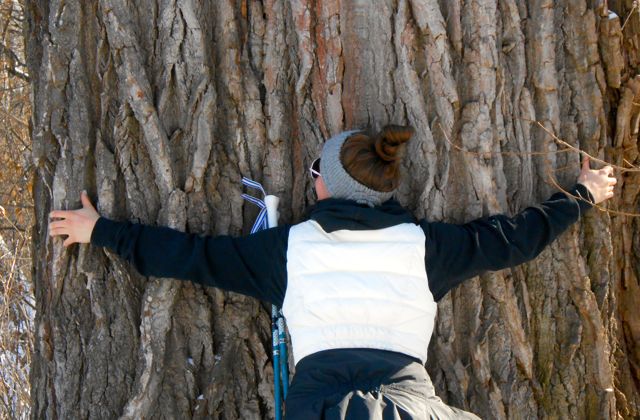
Of course there are many, many more varieties of trees…and many varieties within each species.
If this is fun for you, get yourself a Minnesota tree guide and take it with you on your outings. Take time to stop and learn about a tree when you seen one you especially like.
We suggest: Trees of Minnesota by Stan Tekiela.
Take a look at our Digital Guide Series
You’ll like these, too…
- Top 10 Reasons the Outdoors Beats the Gym
- Why Nature is So Good for Us
- National Outdoor Recreation Education Resources
- New Winter Gear: How Do These Perform? - November 29, 2023
- Paddle North: SUPs, Kayaks and More - November 20, 2023
- 2023 Holiday Gift Guide for Outdoor Lovers - November 10, 2023
